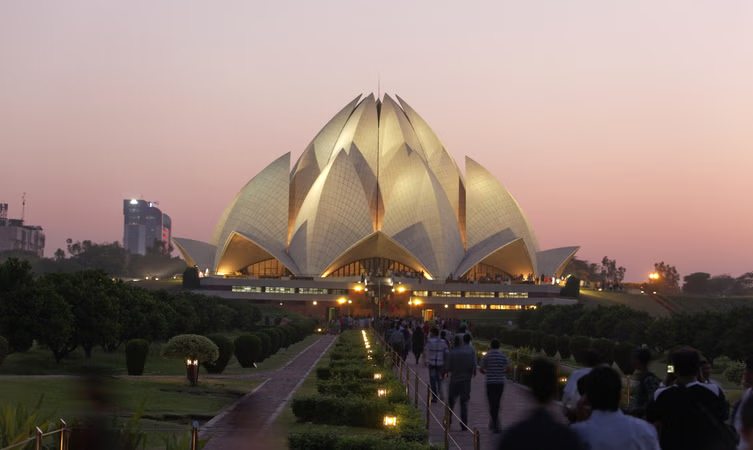Lotus Temple, Delhi – A Bahá’í Place of Worship
The Lotus Temple, located in New Delhi, India, is one of the most remarkable architectural landmarks in the country. Also known as the Bahá’í House of Worship, it is notable not only for its stunning flowerlike design but also for being a symbol of unity and peace. It belongs to the Bahá’í Faith, a relatively young religion that emphasizes the spiritual unity of all humankind.
Completed in 1986, the Lotus Temple was designed by Iranian architect Fariborz Sahba. The structure is inspired by the shape of a lotus flower, which is a symbol of purity and peace in Indian culture. The temple comprises 27 free-standing marble-clad “petals” arranged in clusters of three to form nine sides. The temple has nine doors that open onto a central hall capable of holding around 2,500 people. The white marble used in the construction was sourced from Mount Pentelicus in Greece, the same marble used to build many ancient monuments.
One of the unique aspects of the Lotus Temple is that it is open to people of all religions, backgrounds, and beliefs. It serves not just as a place of prayer for Bahá’ís, but as a space where people can meditate, reflect, and pray in their own way. There are no sermons, rituals, or clergy in the temple. Instead, readings from various religious texts — such as the Bible, the Quran, the Bhagavad Gita, and the Bahá’í Writings — are offered without interpretation, reflecting the Bahá’í principle of the unity of all religions.
The peaceful atmosphere and striking design attract millions of visitors each year, making the Lotus Temple one of the most visited buildings in the world. Its serene environment and beautiful gardens offer a welcome escape from the noise and bustle of Delhi. The temple complex also includes a visitor’s center that provides information about the Bahá’í Faith and the architectural significance of the temple.
The Lotus Temple has received numerous architectural awards and international recognition for its design. Beyond its aesthetic appeal, the temple stands as a beacon of harmony and inclusiveness in a diverse and complex society like India’s.
In essence, the Lotus Temple is much more than a tourist attraction. It is a spiritual landmark and a symbol of the values of unity, peace, and equality. Whether one goes there for architectural admiration or quiet reflection, the temple offers a unique and uplifting experience.
